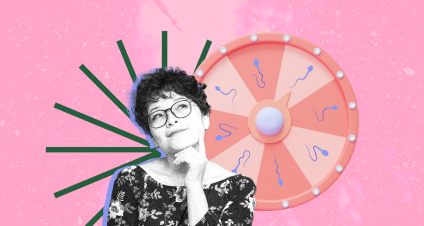For many women, migraine is more than just one bad headache day a month — it’s a recurring, often debilitating condition that can derail your day, week, or even your sense of self. The throbbing pain, light sensitivity, and nausea can turn even simple tasks into monumental challenges. So when we talk about migraine treatments, we’re not just talking about pain relief — we’re talking about getting your life back.
Yes, medications are essential. But so are the everyday choices, the small rituals, and the not-so-small boundaries we set to reduce migraine frequency and intensity. That’s where the power of self-care and a tailored migraine management plan comes in.

What’s the fastest way to cure a migraine?
Let’s get one thing out of the way — there’s no magic wand for migraine. But there are fast-acting treatments that can help stop an attack in its tracks if you act quickly.
The fastest way to ease a migraine is often with “abortive medications”, which are meant to be taken at the first sign of symptoms. These include:
- Triptans, like sumatriptan or rizatriptan, which work by narrowing blood vessels and blocking pain pathways.
- NSAIDs, such as ibuprofen or naproxen, which reduce inflammation.
- CGRP receptor antagonists (like Nurtec ODT or Ubrelvy), a newer class of medication that targets the migraine process directly.
- Anti-nausea meds, like metoclopramide, which can help both with nausea and improve absorption of other treatments.
If medication alone doesn’t cut it, some people find relief with neuromodulation devices like Cefaly (a headband-style TENS device), ice packs, caffeine (in small, strategic doses), or lying in a dark, quiet room.
But the real game-changer? Catching it early. The sooner you take your medication or start your calming routine, the better your chances of reducing the severity — and duration — of your migraine.
How self-care can help during a migraine attack
When it comes to migraine care, self-care is a lifeline. According to Mount Sinai, small shifts in your daily routine can create ripple effects that help reduce both the frequency and intensity of attacks.
Start with sleep. Migraine brains love consistency, so irregular sleep schedules or too little shut-eye can be a major trigger. Aim for 7–9 hours of sleep each night and try to go to bed and wake up at the same time — even on weekends.
Stress is another major migraine villain. The American Migraine Foundation points to stress as one of the most common triggers. Cue your stress-reducing tools: meditation, gentle yoga, deep breathing, journaling, therapy — whatever helps lower the dial on overwhelm.
Staying hydrated, eating regular, balanced meals, and moving your body with low-impact workouts like walking or swimming can also make a huge difference. No need to become a green-juice-glugging gym rat overnight — just tune in to what helps your body feel steady and supported.

How to identify your migraine triggers
Knowing your triggers gives you power. Migraine is wildly individual, and what sets off an attack for you might be totally fine for someone else. That said, some common culprits include:
- Hormonal fluctuations (hi, ovulation and periods)
- Bright or flickering lights
- Loud noises or strong smells
- Weather changes (yes, barometric pressure is that petty)
- Sleep disruptions
- Caffeine or alcohol (especially red wine)
- Certain foods, like aged cheese, processed meats, or artificial sweeteners
Try keeping a migraine diary to track what’s happening in your life before an attack — what you ate, how you slept, what your stress levels were, and where you were in your cycle. Over time, patterns can start to emerge.
And if hormones seem to be playing a starring role in your migraine drama, it may help to loop in both a headache specialist and your OB/GYN. You might explore options like hormonal birth control, magnesium supplementation, or even cycle syncing your lifestyle to reduce flares.
Finding what self-care works for your migraine condition
There’s no single right way to treat migraine — your care plan can be as unique as you are. While medication is often a key piece of the puzzle, many people find that true relief comes from combining several approaches that work together to reduce both the frequency and intensity of attacks.
For some, that might look like taking a preventative CGRP medication while also seeing a therapist to manage stress. Others may benefit from a mix of Botox injections, acupuncture sessions, and dietary changes like cutting out common food triggers. You might experiment with supplements like magnesium, riboflavin, or CoQ10, or you may find relief through lifestyle adjustments like regular sleep, gentle movement, or stress-reduction techniques like mindfulness or journaling.
The important thing is to pay attention to what your body is telling you. If something doesn’t work, you’re allowed to stop. If something helps — whether it’s a prescription, a yoga class, or your favorite ice roller — lean into it. It’s not about choosing between “traditional” and “alternative” treatments. You can have both. You can try, pivot, adapt, and build a plan that meets your needs.
Don’t be afraid to ask your doctor about options you’re curious about — and if you’re not feeling heard, it’s more than okay to seek a second opinion. Your migraine journey is personal, and you deserve support that’s just as personalized.

The real takeaway on migraine treatments
If you’ve been made to feel like your migraine is “just a headache” or something you should push through, please know: you’re not overreacting. Migraine is a neurological disorder, not a mindset problem. And you deserve care that meets the complexity of your experience.
Whether you’re stacking prescription meds with ice packs and blackout curtains, or finding a rhythm with yoga and supplements, your migraine treatment plan is valid — as long as it’s helping you feel more in control.
Because at the end of the day, that’s the goal. Not perfection. Not productivity. Just a little more peace.
Tassia O'Callaghan is an experienced content writer and strategist, having written about a vast range of topics from chemical regulations to parenting, for brands like Peanut App Ltd, Scary Mommy, Tally Workspace, and Office Christmas. She's an advocate for realistic sustainable living, supporting small businesses (author of A-Z of Marketing for Small Businesses), and equity across all walks of life. Follow her on LinkedIn or TikTok, or see more of her work on Authory or her website.








.webp)

.jpg)








